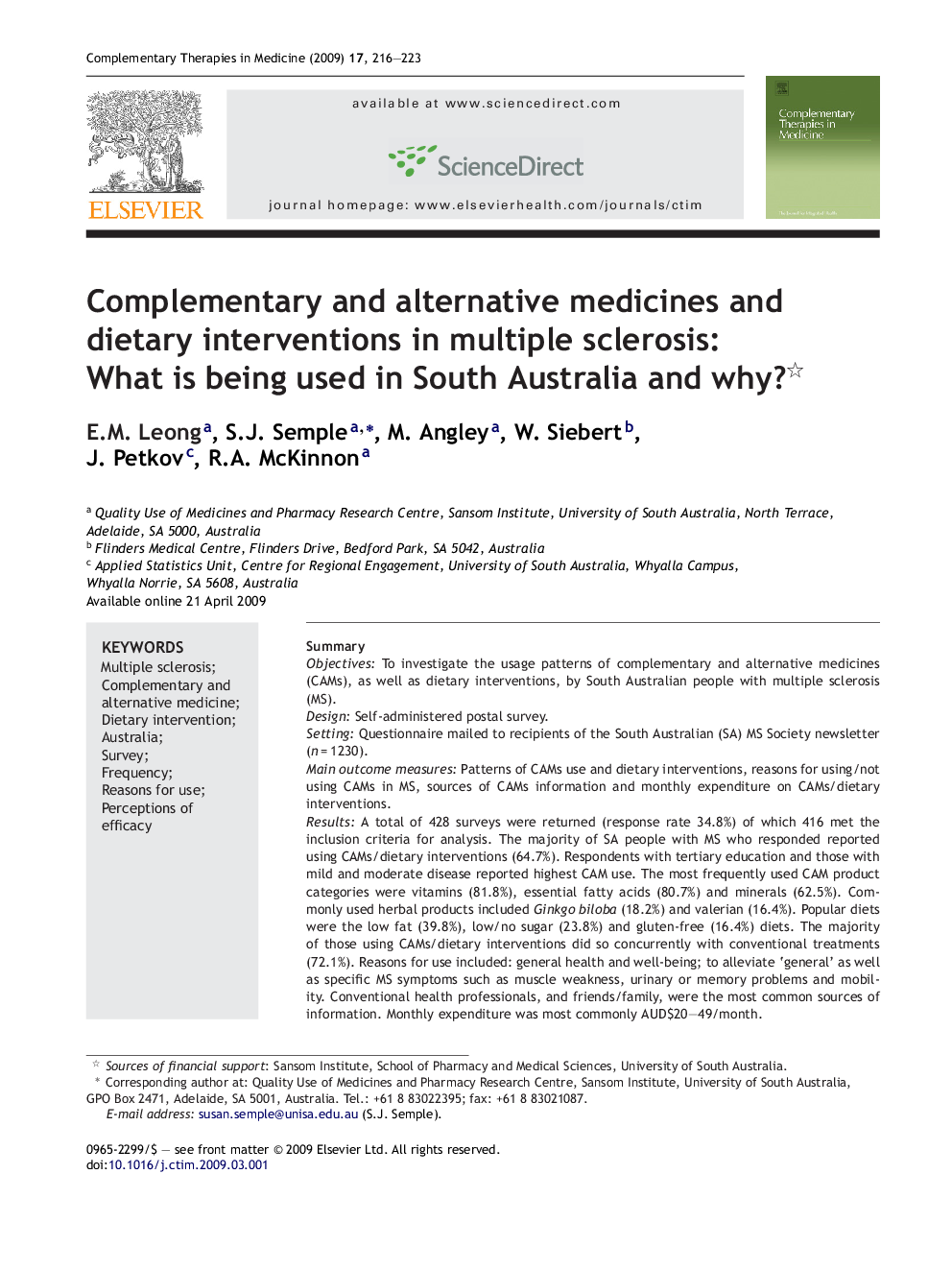| Article ID | Journal | Published Year | Pages | File Type |
|---|---|---|---|---|
| 2629123 | Complementary Therapies in Medicine | 2009 | 8 Pages |
SummaryObjectivesTo investigate the usage patterns of complementary and alternative medicines (CAMs), as well as dietary interventions, by South Australian people with multiple sclerosis (MS).DesignSelf-administered postal survey.SettingQuestionnaire mailed to recipients of the South Australian (SA) MS Society newsletter (n = 1230).Main outcome measuresPatterns of CAMs use and dietary interventions, reasons for using/not using CAMs in MS, sources of CAMs information and monthly expenditure on CAMs/dietary interventions.ResultsA total of 428 surveys were returned (response rate 34.8%) of which 416 met the inclusion criteria for analysis. The majority of SA people with MS who responded reported using CAMs/dietary interventions (64.7%). Respondents with tertiary education and those with mild and moderate disease reported highest CAM use. The most frequently used CAM product categories were vitamins (81.8%), essential fatty acids (80.7%) and minerals (62.5%). Commonly used herbal products included Ginkgo biloba (18.2%) and valerian (16.4%). Popular diets were the low fat (39.8%), low/no sugar (23.8%) and gluten-free (16.4%) diets. The majority of those using CAMs/dietary interventions did so concurrently with conventional treatments (72.1%). Reasons for use included: general health and well-being; to alleviate ‘general’ as well as specific MS symptoms such as muscle weakness, urinary or memory problems and mobility. Conventional health professionals, and friends/family, were the most common sources of information. Monthly expenditure was most commonly AUD$20–49/month.ConclusionThis study reports frequent use of CAM/dietary intervention amongst SA people with MS. The majority of users did so in conjunction with conventional treatments.
